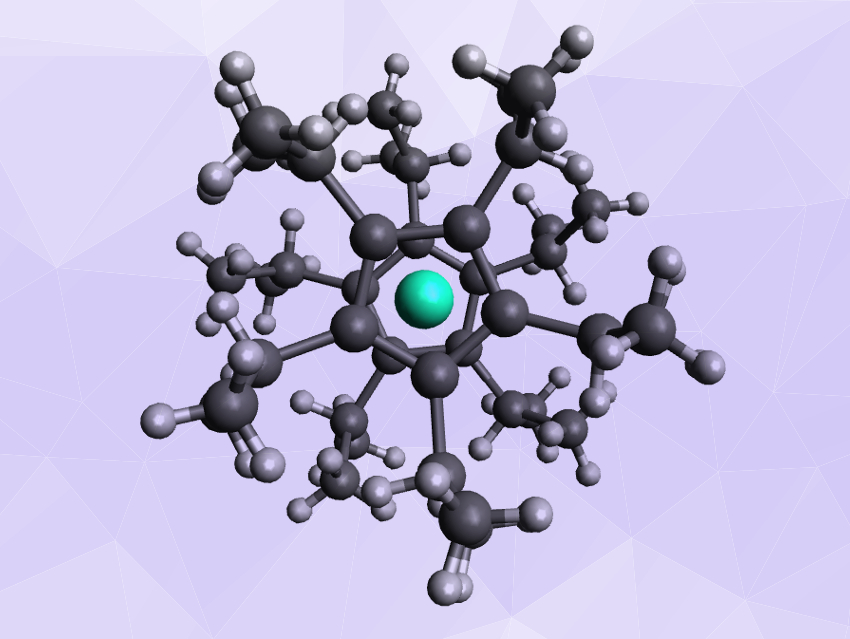Lanthanides often interact only weakly with ligands. This makes the structure of lanthanide complexes hard to predict, but also causes interesting and potentially useful magnetic properties. Increasing the symmetry in these complexes could enhance their magnetic properties.
Filipp Furche, University of California, Irvine, USA, Benjamin G. Harvey, U.S. Navy, China Lake, CA, USA, Jeffrey R. Long, University of California, Berkeley, USA, and colleagues have synthesized the first examples of neutral, linear metallocene complexes of terbium and dysprosium. These complexes have high-symmetry structures (top view pictured). The team prepared the desired complexes by reducing Ln(CpiPr5)2 (Ln = Tb, Dy) precursors with KC8.
The researchers performed density functional theory (DFT) calculations and found that enhanced covalent interactions between metal and ligands could be responsible for the linear structure. The magnetic properties of the compounds were also investigated. The team found that Tb(CpiPr5)2 has the highest thermal barrier to magnetic inversion and the highest magnetic blocking observed so far in a non-dysprosium single-molecule magnet.
- Synthesis and Magnetism of Neutral, Linear Metallocene Complexes of Terbium(II) and Dysprosium(II),
Colin A. Gould, K. Randall McClain, Jason M. Yu, Thomas J. Groshens, Filipp Furche, Benjamin G. Harvey, Jeffrey R. Long,
J. Am. Chem. Soc. 2019.
https://doi.org/10.1021/jacs.9b05816




